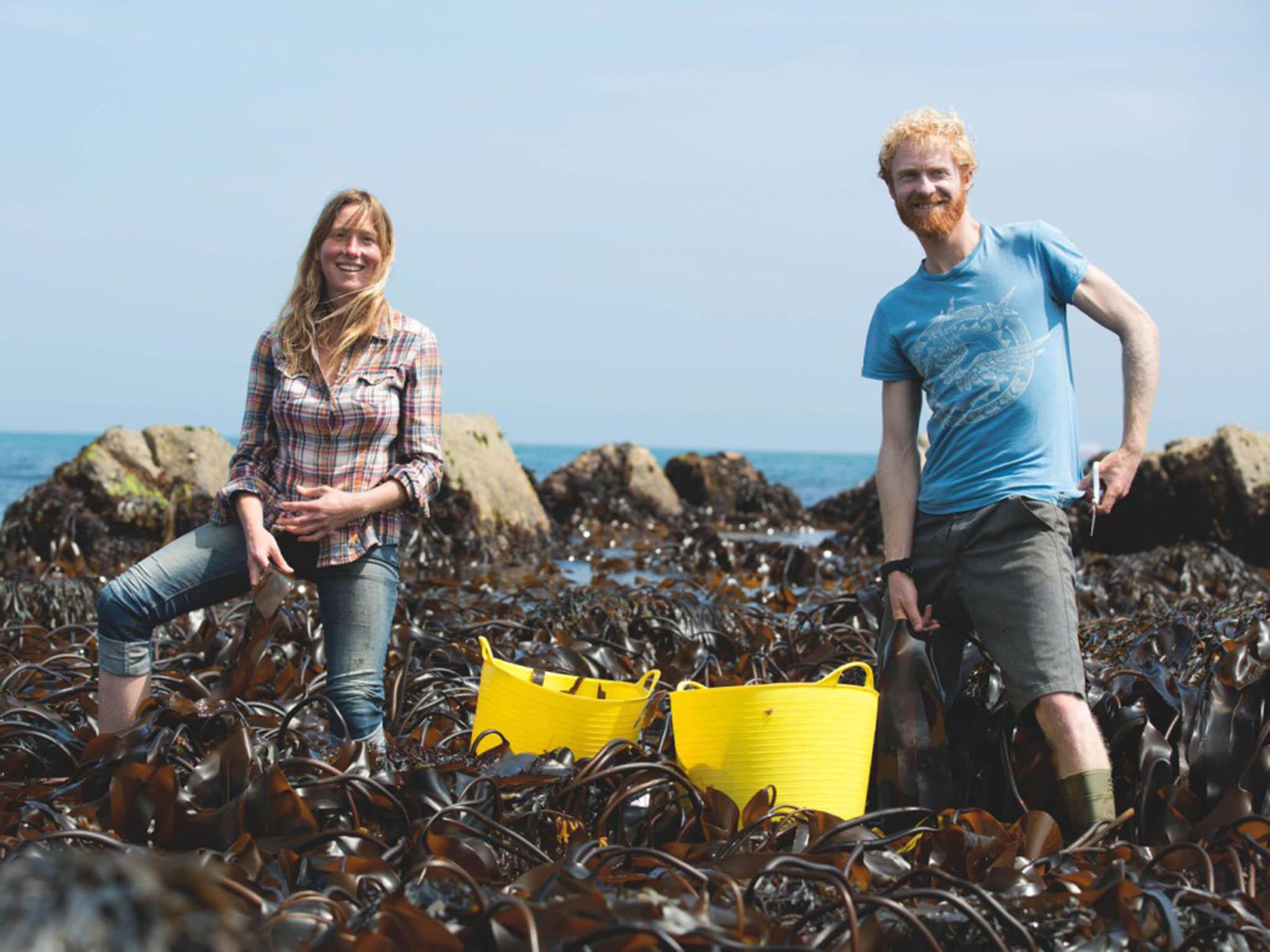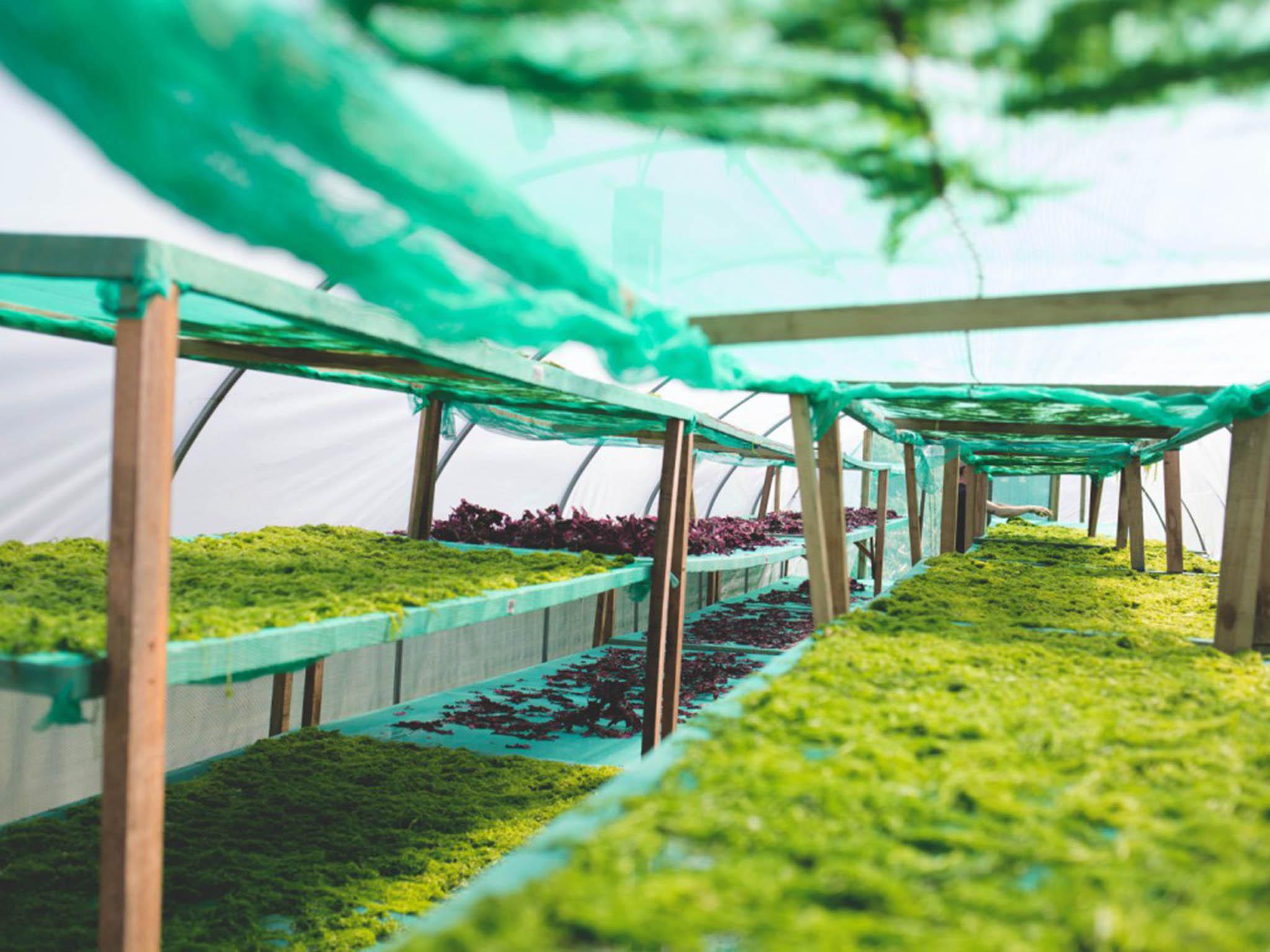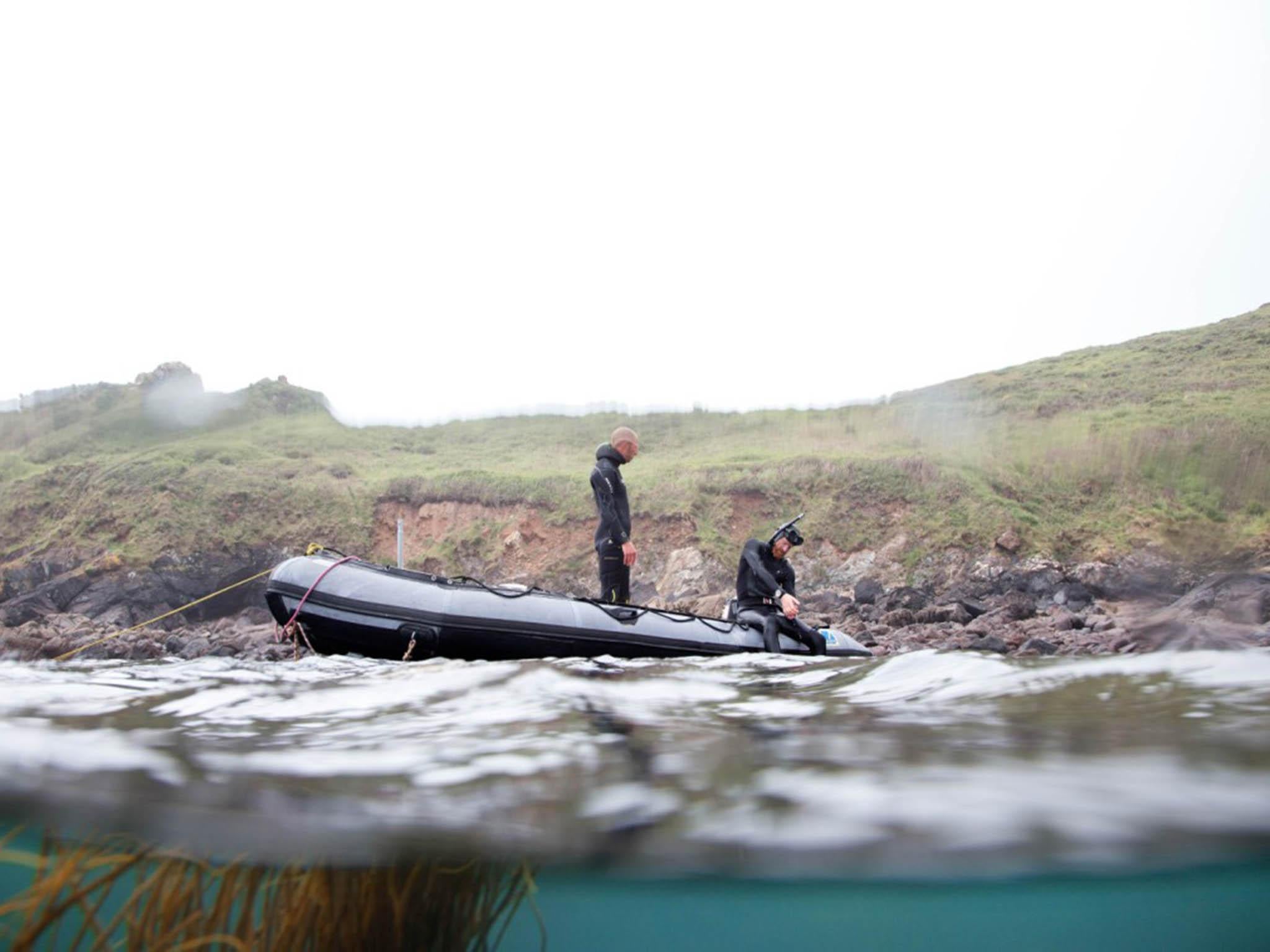Seaweed to success: Reinvigorating the British seaweed industry
There are around 700 species of seaweed in UK waters, but the delicacy has long been a rarity on British menus. Now it’s making a comeback

Your support helps us to tell the story
From reproductive rights to climate change to Big Tech, The Independent is on the ground when the story is developing. Whether it's investigating the financials of Elon Musk's pro-Trump PAC or producing our latest documentary, 'The A Word', which shines a light on the American women fighting for reproductive rights, we know how important it is to parse out the facts from the messaging.
At such a critical moment in US history, we need reporters on the ground. Your donation allows us to keep sending journalists to speak to both sides of the story.
The Independent is trusted by Americans across the entire political spectrum. And unlike many other quality news outlets, we choose not to lock Americans out of our reporting and analysis with paywalls. We believe quality journalism should be available to everyone, paid for by those who can afford it.
Your support makes all the difference.Laverbread is a culinary Marmite: love it or loath it. First things first: it’s not a bread at all. It’s seaweed that’s washed, boiled for hours until it’s a greenish-black gelatinous mass then minced and served on its own or mixed with oatmeal and made into patties and cooked in bacon fat.
Jonathan Williams is a fan. His four-year old daughter is not. Yet.
If you’ve never heard of laverbread, you’re not alone. Like many dishes made from seaweed in Britain it was better known a hundred or more years ago. Small china pots of seaweed were sold in Bath in the 18th century for its health benefits while seaweed sauce was served as a popular accompaniment to roast lamb.
In Pembrokeshire, where Jonathan is from, laverbread was a dietary mainstay for hard working labourers and miners – a foraged food before foraging became posh.
Today, seaweed is on the culinary map again thanks to seaweed-loving folk like Jonathan who ditched his day job in 2010 to launch a street-food business called Cafe Môr (Môr means sea in Welsh) focusing on local seafood and seaweed.
A few years later, he began harvesting seaweed in earnest, drying it and selling it through his business The Pembrokeshire Beach Food Company as Welshman’s Caviar – the name actor Richard Burton gave to laver.

Like Jonathan, Caro Warwick-Evans, co-owner of The Cornish Seaweed company, is another keen supporter of British seaweed. She worked in developing countries to install renewable energy systems but came to Cornwall to recuperate after a serious automobile crash. When she was well enough to work again, renewable energy policies had changed and work had dried up.
She was living in the back of a van and working as a cleaner when she heard a radio programme on the seaweed industry in Ireland. She wondered why no one was harvesting seaweed in England. “Everyone sees seaweed but no one does anything with it,” she says. She contacted the Irish company who invited her to come learn more. She did and was so excited that she came back to Cornwall and started her own company with partner Tim Van Berkel.

The learning curve was steep as there weren’t regulations in place for harvesting or selling seaweed. Caro and Tim worked with a number of bodies including Natural England and the Food Standards Agency and were instrumental in drawing up a code of conduct for sustainable seaweed harvesting. They now have a license from The Crown Estate to harvest seaweed on a stretch of Cornish coast.

Protecting coastal seaweed is critical for producers. Both the Beach Food company and Cornish Seaweed hand cut their seaweed using scissors and knives. This allows the seaweed to grow back and regenerate. Jonathan’s company is even helping to fund research at Swansea University looking at current seaweed stocks. One day, seaweed may be grown commercially as it is in Japan but for now it is a labour intensive operation governed by the season and the tides.

There are around 700 species of seaweed found in UK waters. Jonathan says Wales is the ideal environment for a number of different seaweeds. Caro harvests in a marine conservation zone with water that comes in straight off the Atlantic, creating optimal growing conditions.
She harvests a range of different seaweeds including organic dulse (a gorgeous warm red colour with sweetness, smokiness and that unmistakable hint of the ocean), sea spaghetti, sea greens, and kombu. The seaweeds can be used dry, as an ingredient or sprinkled on top, or rehydrated and added to soups, stews, eggs, stir-fries – even sweet dishes like brownies can get the seaweed treatment.
These edible algae pack a nutritional punch. Take that lovely dulse – it’s high in protein and fibre, low in fat, and full of calcium, iron, iodine, copper, manganese, magnesium, potassium, zinc plus a rather awe inspiring list of vitamins. Researchers at Newcastle University now say that the alginate found in seaweed reduces the uptake of fat in the body with hopes that seaweed could be an important tool in the fight against obesity. All in all, it puts other so-called super foods to shame.
We’ve been eating seaweed for centuries and it’s always been an essential ingredient in Japanese cooking. But now with the likes of Jamie Oliver raving about seaweed and businesses harvesting and supplying native seaweed it could be its time to shine. “I play around with it to extract the oils or make seaweed ketchup or different seaweed butters,” says Jonathan. “It’s a very clever ingredient because it works so well with so many things. Four or five years ago, it felt like an uphill struggle. But now it’s getting there.”
All the signs point to a long overdue change in how we think about, cook with, and eat seaweed. However, whether or not Jonathan will convince his daughter to love his favourite dish of laverbread remains to be seen…

Five beans on toast with Welshman’s Caviar – The Pembrokeshire Beach Food Company
Serves 1
Seaweed should be part of every day cooking. I believe it is as essential as salt or pepper. So here is a quick, easy every day recipe which elevates this classic to a whole new level. Eat well!
1 rustic roll
1tbsp Welshman’s Caviar
1tsp Welsh Sea Black Butter
50g British mature cheddar, grated
½ tin Heinz Five Beans
1tsp tomato ketchup
Dash of Worcestershire sauce
Warm your beans up slowly and add the ketchup and Worcestershire sauce. Allow to thicken and season. Cut your roll in half and toast. Once toasted spread the Welsh Sea Black Butter on both sides. Add the cooked beans, top with grated cheese and place under the grill.If you don't have a grill, don't worry neither do I. Once the cheese is gooey and golden, sprinkle on the Welshman’s Caviar, enjoy!

Goan kombu fish curry – The Cornish Seaweed Company
4tsp ground coriander
2tsp cumin
½ tsp dried chilli flakes
Large nob of ginger, peeled and grated
4 garlic cloves, crushed
1tsp turmeric
1 pinch of Cornish sea salt
2tbsp oil
1 onion finely chopped
2 tomatoes finely chopped
1 tin coconut milk
1tbsp soft light-brown sugar
1 green chilli, halved, deseeded and finely sliced
500g firm white fish fillets, skin removed and flesh cut into chunks (about 3cm sq)
30g fresh kombu rinsed and chopped into 4cm chunks
Fresh coriander
Toast the coriander seeds, cumin and dried chillies in a dry frying pan for about a minute. Grind in pestle and mortar, then mix in the ginger, garlic, turmeric and salt. Heat the oil over a medium heat and fry the onion until soft. Mix in the ground spices and cook for two minutes, stirring constantly. Then add the tomatoes and cook down to reduce the liquid. Add the coconut milk, kombu, sugar, and green chilli and bring to almost boiling. Then reduce heat and simmer for 5 minutes until sauce is thicker. Slightly salt the fish then add it to the pan and simmer for 3-5 minutes until the fish has just cooked through. Season if needed then serve with a generous sprinkle of coriander.
Join our commenting forum
Join thought-provoking conversations, follow other Independent readers and see their replies
Comments